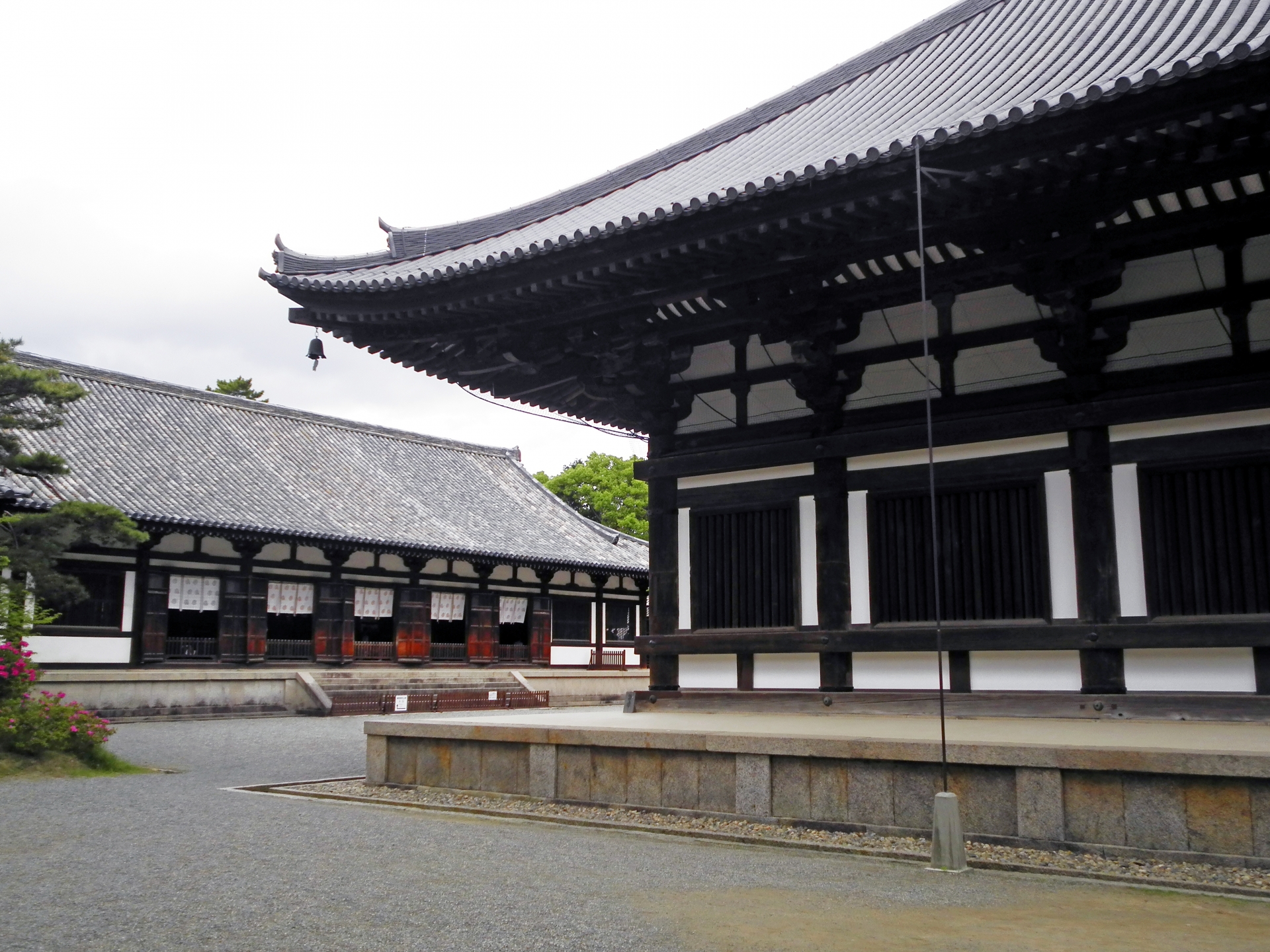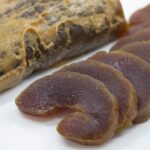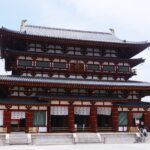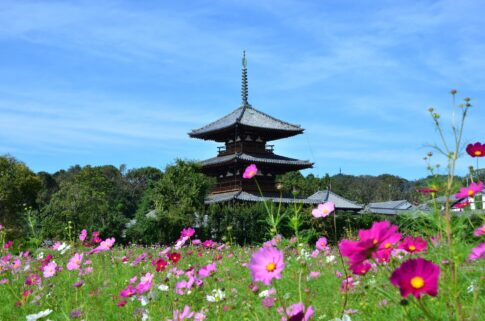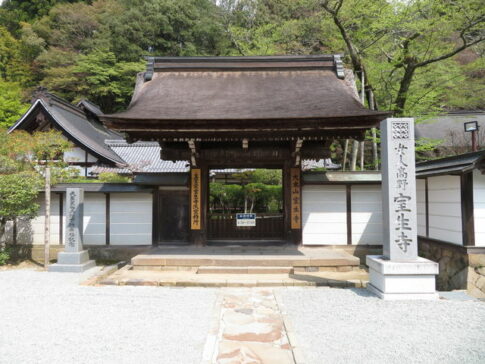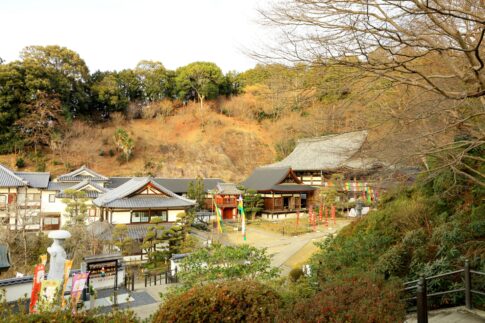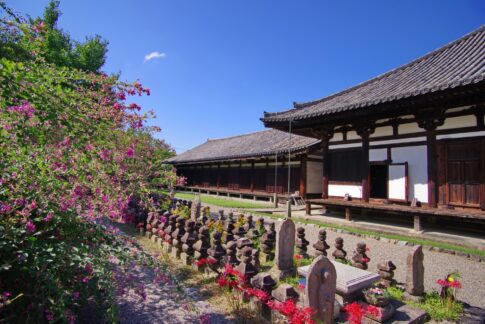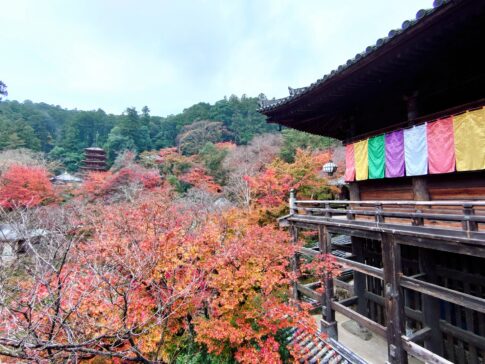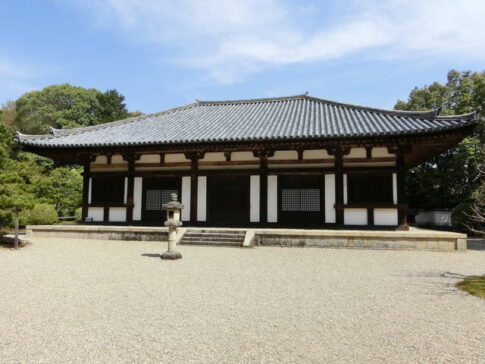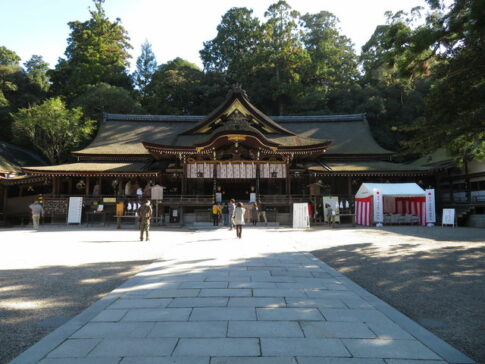Toshodaiji Temple houses a wide variety of historical things like statues, paintings and so on.
If you interested in Japanese old artworks, you should visit there.
What you need to know before visiting Toshodaiji Temple
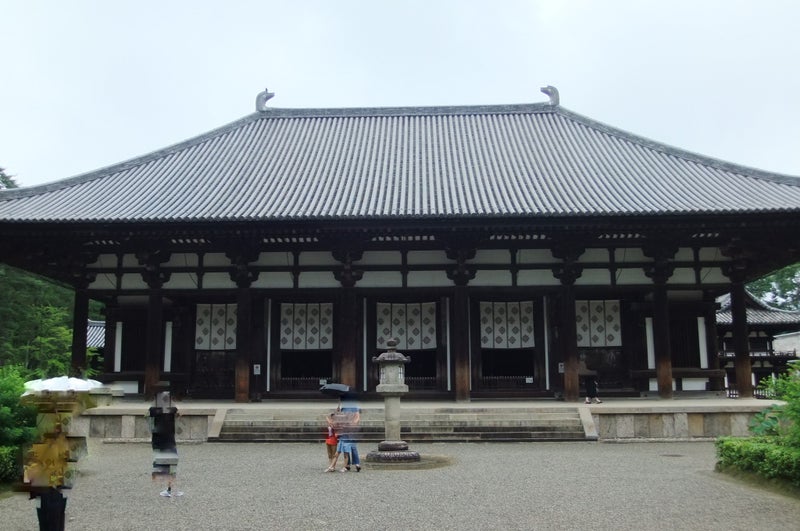
1. Basic Information
Toshodaiji Temple is the head temple of the Ritsu sect, one of the six sects of the Southern Capital.
After spending five years at Todaiji Temple, he received a grant of land formerly belonging to Prince Shintabe (present-day Gojo-machi, Nara City), and in 759, he opened a training center for those studying the Buddhist precepts.
When the temple was named “Touritsu-Shodai” and started as a private temple of Ganjin Wajo, it had only an auditorium, a sutra library converted from the former residence of Prince Shintabe, and a treasure house.
The Kondo was completed in the late 8th century through the efforts of Nyoho, a disciple of Ganjin Wajo.
Today, the Kondo and the lecture hall, built in the Nara period (710-794), are a precious temple complex that conveys the spirit of the Tenpyo period.
2. Who is Ganjin Wajo
Born in Yoshu, Tang China, Ganjin Wajo was ordained at the age of 14, trained in Rakuyo and Choan, and returned to his hometown of Daiunji in 713, where he was named the first great master of the Gangnam region.
In 742, he received an invitation from Yoei and Fusho, foreign exchange student monks who were visiting Tang China on the ninth envoy ship to the Tang Dynasty, to serve as “teachers of the precepts” at the Imperial Court, and decided to travel to Japan. During the next 12 years, he made five unsuccessful attempts to travel to Japan and gradually lost his eyesight, but in 753, he finally stepped on Japanese soil for the sixth time.
Thereafter, he spent five of his ten years at Todaiji Temple and the remaining five at Toshodaiji Temple until the age of 76, where he gave precepts to many people, including the Emperor of Japan.
The scenes of his travels are depicted in the “Tōsen-den Emaki” (Important Cultural Property).
3. What Toshodaiji Temple Houses
Toshodaiji Temple has many National Treasures and Important Cultural Properties, including the Kondo (Golden Hall) and the Kodo (lecture hall) built in the Nara Period.
Toshodaiji Temple has many national treasures and important cultural assets, including the Golden Hall and the Lecture Hall, both built in the Nara Period.
- Kondo (Golden Hall)
The Kondo, which presents a majestic appearance in front of the Nandaimon gate, is a representative building that retains the appearance of the building as it was when it was built in the late 8th century.
The exterior is of the yosemune style with a frontage of 7 ken (4.7 m in the center, gradually narrowing to 3.3 m at the ends) and a depth of 4 ken, with the front one-ken avenue opening out, and the eaves support structure called mitesaki, indicating the date of construction.
The hall is filled with soft light through the lattice windows, and the main image of seated Rushana Buddha in the center, standing Yakushi Nyorai on the right, and standing Senju Kannon on the left (both national treasures) create a solemn atmosphere reminiscent of the Tenpyo period.
- Seated Vairocana Buddha (National Treasure)
The main image in the Kondo hall stands over 3 meters tall, with a 5.15 meter high halo. It is made of deactivated dry lacquer, which was widely used in the Nara period (710-794), and its form has both grandeur and softness, making it a statue that is similar to Buddhist statues of the Tang dynasty and is suitable for the principal image of Toshodaiji Temple.
The number of incarnations of Buddha on the halo behind the statue is 862, but it is said that the original number was 1,000.
- Standing Yakushi Nyorai (National Treasure)
This standing statue, 3.36 m high, is placed on the right side of the seated Rushanabutsu, the principal image.
It is thought to have been completed in the early Heian period (794-1185), a little later than the main statue, the Senju Kannon (Thousand-armed Kannon).
The image has an overall dignified impression due to the prone expression on the face and other features.
During repairs in 1972, three old coins were found in the left palm, and the age of the coins clearly indicates that the statue was completed in the early Heian period.
- Standing image of the Thousand-armed Kannon (National Treasure)
This 5.36 m high standing statue is enshrined on the left side of the main statue, the seated Rushanabutsu.
The statue has 42 large side arms and 911 small side arms, for a total of 953 arms, which are well balanced and do not look unnatural. It is also believed that the statue originally had 1,000 arms. The overall impression is one of spontaneity and a cool, clear nose and eyes.
- Mieido
Located on the north side of the precincts of the temple, this elegant building is surrounded by an earthen wall. The building was originally the remains of Ichijoin Shinkinden (Imperial Hall), which was a separate temple of Kofukuji Temple and was used as the prefectural government office and Nara District Court building after the Meiji period (1868-1912).
Currently, a seated statue of Ganjin Wajo (National Treasure) is enshrined in the building, which also houses a picture of the seated statue of Ganjin Wajo, a fusuma (sliding door) picture, and a wall painting by Kaii Higashiyama (painter) between 1971 and 1982.
・Seated statue of Ganjin Wajo (National Treasure)
Standing 80.1 cm tall, this is the oldest portrait sculpture in Japan and is representative of the Tenpyo period.
It is a masterpiece that evokes even the indomitable spirit of Ganjin Wajo.
The interior is hollow, which is a result of the process of deactivating dry lacquer by which hemp cloth is pasted together with lacquer and then shaped. It is said that his disciple Ninki guided the production of this sculpture, and the vivid colors can still be seen today.
- The Wall Paintings by Kaii Higashiyama
This is a sliding door painting in the Mieido Hall where the seated image of Ganjin Wajo is enshrined.
It is a major work by Kaii Higashiyama, one of Japan’s most famous painters, who dedicated over 10 years of his life to Ganjin Wajo.
The theme of the painting is Japan’s climate, and it includes the vividly colored “Mountain Clouds” and “Tosei,” and the magnificent landscapes of Wajo’s homeland China painted in black ink, such as “Yoshu Kunpu,” “Kozan Gyoun,” and “Keirin Gessho,” as well as “Zuikou,” a door painting of the kitchen that holds the seated statue.
The door painting “Zuikou” that houses the seated statue is also by the artist.
Summary
As mentioned above, Toshodaiji Temple houses many precious things.
Please enjoy the temple complex and its treasures, which are the crystallization of the Tenpyo culture.
